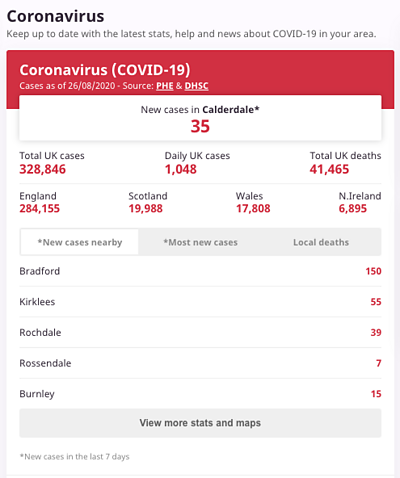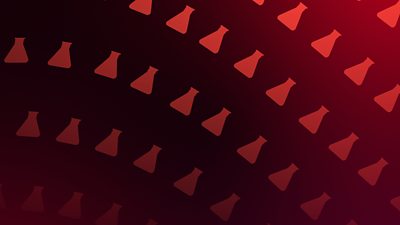Most visibly, lockdowns that came into force to slow the spread of Covid-19 triggered an exodus from many newsrooms with journalists continuing their work from bedrooms, dining tables and kitchen counters.
This led to workarounds as access to studios and key equipment was severely reduced. Schedules were rearranged and shift patterns were altered, all while journalists grappled with one of the fastest evolving and biggest stories of their professional lives.
Many of these changes were assisted by technology. Newsrooms built new routines, keeping in touch by using video conferencing tools and messaging apps to share best practices and other resources. Distributed teams continued to collaborate on shared documents and edits in the cloud.
For audiences, the use of data allowed the story of the pandemic’s spread to be told at scale, often with detail for both international and local audiences. Much of this was built iteratively, until it ran mostly automatically.
The questions now are which of these necessary innovations will cease after the crisis and which of them look to be here to stay? What lessons have newsrooms learnt and which improvements can we make permanent?
Below are six perspectives from around the industry about the crisis.
Financial pressures and new funding models
The pandemic has raised questions about how news is funded and whether something more sustainable can be built for the future.
Marcela Kunova, Editor journalism.co.uk
The crisis hasn’t perhaps brought anything brand new but has exacerbated trends we were already seeing before the pandemic.
One of them was the rise in subscriptions to news products - as the demand for Covid-19 news rose, so did the number of paying subscribers. This has busted some myths about people’s unwillingness to pay for news. The tricky bit now is to come up with efficient strategies to retain these “coronabump” subscribers.
The fragility of the ad revenue model - many brands didn’t want to be associated with Covid-19 - has got many publishers thinking about how to improve the resilience of their businesses.



Another big change that we see is the rise of the “distributed newsroom”. Many media professionals have been working from their kitchen tables, lounges and beds for a few months now. Anecdotal evidence suggests many are determined to keep it that way, at least for a few days a week. This may also lead to changes to physical newsrooms as many organisations are looking to reduce the cost of running their businesses and cutting office rent seems like an increasingly attractive option.
Collaboration and working remotely
As the same logistic and journalistic questions arose in multiple newsrooms, many started to compare notes, sharing tips, research and technological workarounds. An office exodus also led to a surge in remote working, enabled by technology.
Sarah Ward-Lilley, Managing Editor, BBC News and Current Affairs
There has been a lot more collaboration between public service broadcasters through the European Broadcasting Union. It’s been really useful to hear what other broadcasters were doing, both editorially and operationally. Everything from numbers in offices, social distancing, temperature testing, masks or no masks. I think we have learnt a lot from each other.
To a greater or lesser extent, remote working has been surprisingly successful.
We thought there would be no audience acceptance of dodgy technology or remote interviews and there has been because there's been a good reason for it. I always used to think, when we were covering hurricanes, it didn't matter at all if the camera was a bit wobbly. It was a blooming hurricane. We’re real people in real life in real situations. The technology is part of that. It’s about being honest with our audiences.

It’s been good for diversity, too. With people not coming into our studios, we can get guests from further afield. If it's the right person, it doesn't matter where they are.
Dr Rosemary Leonard, GP and media medic
I remember sitting on the Breakfast sofa in Salford, back in early March, suggesting gently that we should no longer be shaking hands. How things have changed since then!
As the number of Covid-19 cases in the UK rose, so did the calls from media outlets.
With the national lockdown, all TV appearances had to come from home. I still find it odd doing my hair and ‘studio’ make up only to sit in front of a blank computer screen at home, speaking to presenters I can’t see, but we’ve learnt that’s the best way to guarantee a good connection and sound quality.
"It's going to be a huge task to get everybody vaccinated"
GP @DrRosemaryL tells #BBCBreakfast why she doesn't believe the pandemic will be over by Christmas.
More here: https://t.co/0dmI1uctUG pic.twitter.com/go0cOEupnI
— BBC Breakfast (@BBCBreakfast) July 22, 2020
Early on, other media medics and I took the view that if we were going to speak with any authority, we had a moral duty to get our facts right. Technology has made this easier, with scientific papers published online and public health data more accessible than ever. The Johns Hopkins dashboard and datasets have been really powerful.
To collaborate faster, we set up a WhatsApp group to share knowledge from both published scientific papers and our individual conversations with experts.
This, combined with a twice weekly conference call with Jenny Harries, the Deputy Chief Medical Officer for England, has proved invaluable.
Lots of avid reading of the rea science, regular briefings from Deputy Chief Medical Officer & great teamwork sharing facts with #MediaMedics @DrRosemaryL @Dr_Ellie @DrDawnHarper @DrZoeWilliams @DrHilaryJones . Having the facts makes all the difference! https://t.co/kfqwQ0v1Wc
— DrSarahJarvis (@DrSarahJarvis) March 19, 2020
This speed of information sharing has meant that we can get answers to the public faster, and they can ask questions faster. I wrote a daily column for one newspaper, where I could answer questions coming in via email for the next day’s paper, elaborating and clarifying as more evidence became available.
Rory Cellan-Jones, BBC Technology correspondent
There have certainly been changes. Consider a program like Tech Tent on BBC World Service. We used to go to a studio at 3pm on a Friday and put it out live. That was obviously not going to be possible, so now we record the programme.
My producer, Jat, has been putting together the whole programme on an iPad. The whole programme is basically run by Zoom. The interviewees record their audio locally, I record my questions locally and then Jat assembles it.
Week 18 of #wfh @BBCTechTent and it's me from a loft in West London, @janewakefield from a Berkshire kitchen and @jatusmaximus pulling it together from a bunker a mile beneath St Albans pic.twitter.com/iUydDuOBvM
— Rory Cellan-Jones (@ruskin147) July 24, 2020
New stories to tell and new data to tell those stories
Journalists had to make sense of a deluge of data regarding cases, transmission rates and deaths across the world. They built on best practice and learnt strategies to apply for future stories.
Sam Joiner, Head of Data and Digital Storytelling, The Times
It's very rare that such a numbers-driven subject dominates the news agenda for such a long period of time. For the data and digital storytelling team, we had to pause work on a number of projects and switch everyone's focus to covering the pandemic. Overnight, we became a coronavirus team.
There was a big shift towards visualising coronavirus data and I was quite proud of how we responded to that challenge. Updating something regularly actually can become a bit of a slog though so one of the main learnings has been seeing how well automation tools can work.
We managed to automate all of our coronavirus visualisations which was great for us, and enabled us to update one script which updates all the online charts. The graphics for print are automated too. That is something we will try to do again, for example with a Johnson vs Starmer poll tracker.
It's been a busy start to life as Labour leader for Keir Starmer and our poll tracker shows how he has closed the gap on Boris Johnson. This is an excellent round up of a helter skelter few months by @patrickkmaguire & @Dan_Clark5 featuring lots of viz 📊https://t.co/XnGj2FLsLD pic.twitter.com/vl6UD8vRdL
— Sam Joiner (@samjoiner) June 26, 2020
The other thing the pandemic did was speed up the move towards becoming a digital first newsroom. As long as we're in the right position to respond and have the right processes in place, I think that's potentially very exciting.
Alison Gow, Editor in Chief of regional digitals, Reach plc
From virtual yoga to a homeschooling club for kids and data insights into local coronavirus numbers, our local journalists and news titles have been working flat out over the past few months.
We adapted out content across the whole network. Several of our journalists were given a 'positive news reporter' agenda - something that has continued as we emerge from this. Our Westcountry teams launched a hugely popular 'Lockdown Pub Quiz' and our mental health podcast ‘No Really I’m Fine’ came out with extra, specific episodes to help people who might be struggling with various challenges from isolation to anxiety during lockdown.

We pivoted our hyperlocal In Your Area brand to incorporate Covid-19 case numbers, which has been used by millions of people. We created a widget showing which Reach local newspapers were available for home delivery, gave restaurants the ability to publicise moves to temporary takeaway outlets, and showed Covid-19 support groups near readers, through a collaboration with the BBC's Shared Data Unit.
New Labs has felt many of these shifts with the rest of the industry over the past few months. We continue to work remotely, designing new audience experiences, prototyping journalist tools, running hacks and research sessions. We will be sharing updates over the coming months.
Latest news
Read all newsBBC News Labs
-

News
Insights into our latest projects and ways of working -

Projects
We explore how new tools and formats affect how news is found and reported -

About
About BBC News Labs and how you can get involved -

Follow us on X
Formerly known as Twitter




